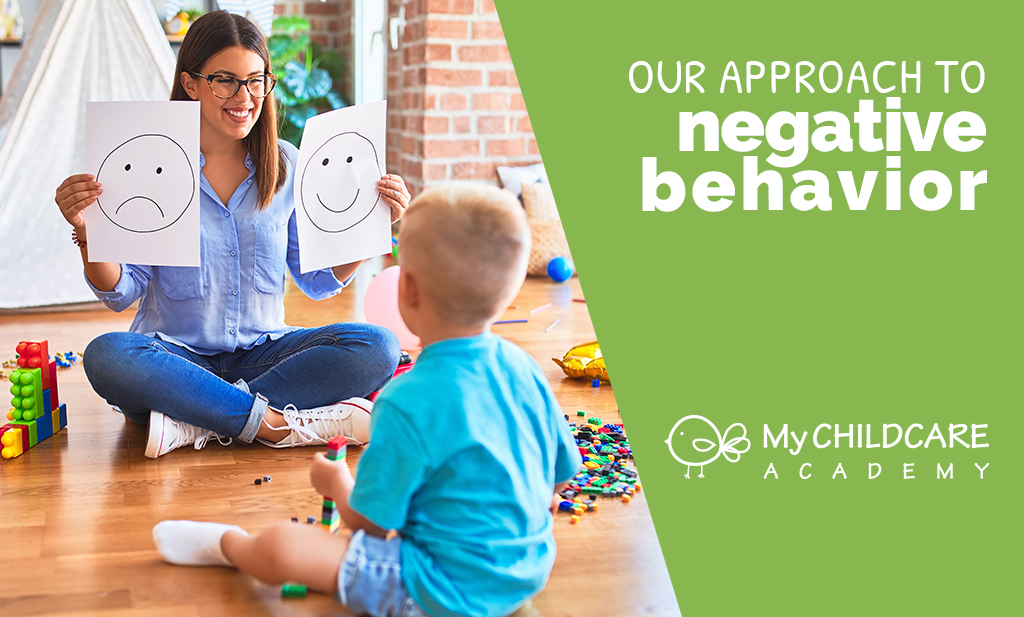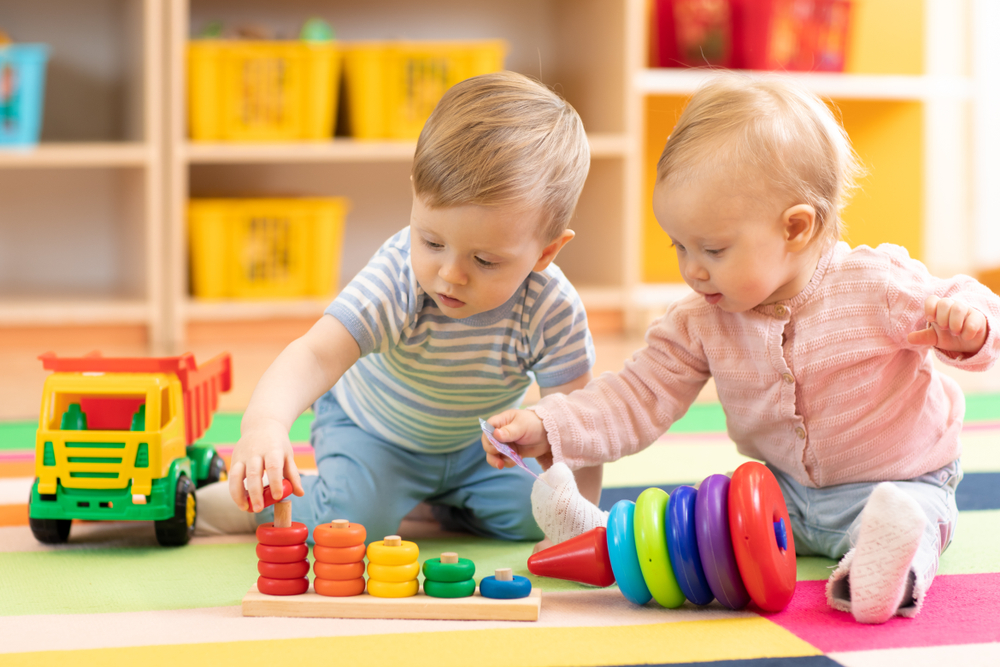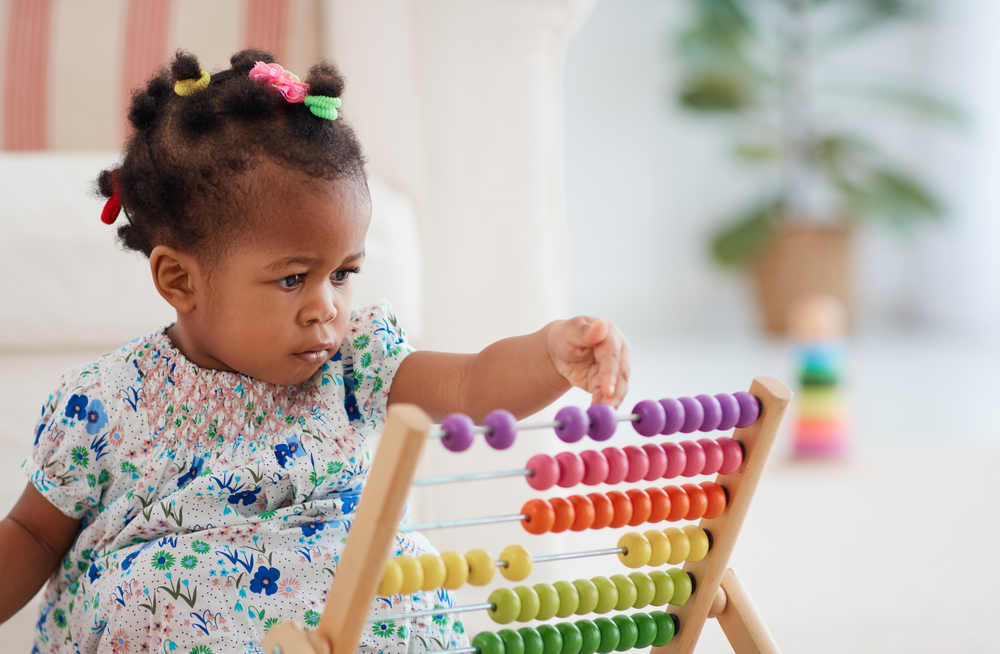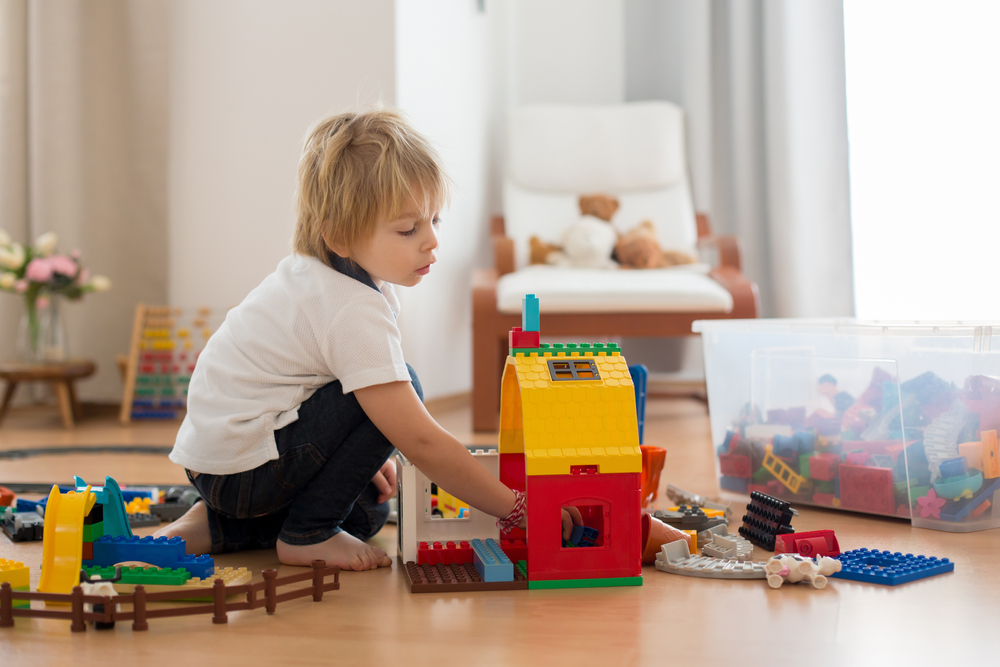
Our Approach to Negative Behavior
Discipline is a normal and necessary part of childhood. Disciplining your child means teaching them responsible behavior and self-control. With appropriate and consistent discipline, your child will learn about consequences and how to take responsibility for their actions. The overall goal of discipline is to encourage your child to learn how to manage their feelings and behavior.
Our discipline policy is all about teaching and positive redirection. We understand that different age groups express themselves differently. It’s all part of growing up! However, we encourage children of all ages to behave appropriately and respond to their antics in ways that help teach them the right way to act. Here are some of the common behaviors expressed among the different age groups as well as some of our common responses to them:
Typical Behaviors in Infants (Birth to 11 Months)

Discipline isn’t necessarily needed when it comes to infants. Sometimes newborns will cry for no reason at all. However, in time, you’ll be able to understand your child’s needs based on how they cry.
Some typical behaviors we see in infants are:
- Will cry when under stress, expressing a need, or trying to communicate.
- May show signs of anxiety during change.
Our Response
We attend to needs in a timely manner when they are crying. Infants may cry due to separation anxiety and like to be held. We will try to calm them by holding, singing, using their name, and talking calmly. Infants become bored if they don’t receive adequate attention or stimulation. We believe in redirecting infants to another activity if there are behavioral issues.
Typical Behaviors in Toddlers (12 to 23 Months)

When your child starts to become a toddler, discipline becomes more necessary as they start to learn themselves and the world around them. Setting rules and limits while their young teaches them what behaviors are acceptable and what aren’t and can help with problems down the road.
Some common behaviors we see in toddlers are:
- May cry, hit, or bite to get their way or to express frustration.
- May show signs of anxiety during change.
- Enjoy exploring objects with others to establish relationships.
- Not able to understand taking turns or sharing.
Our Response
Redirection is most effective for this age. In instances where action would need to be taken, we would evaluate the environment to see if children are being over-stimulated or if there isn’t enough space for children. We’d also ensure there are enough of each toy to eliminate the need of taking turns. We’d praise and use positive reinforcement. Our teachers will also model
appropriate behavior for your children.
Typical Behaviors in Two-Year-Olds

As your child gets older, temper tantrums can become more frequent. Don’t worry, temper tantrums are a normal part of growing up. This is your child’s way of expressing their frustration when they don’t have the words or language to tell you their feelings.
Some other behaviors we typically see in two-year-olds are:
- Say, “No!” a lot as a way to assert their independence.
- Not yet able to share well.
- Will use the word, “Mine” frequently.
- Exhibit mood swings.
- Not able to manage emotions.
- Enjoy peer play and joint exploration.
Our Response
There are a few different ways you can respond to your two-year-olds behavior without negatively impacting them and their development. Redirection is most effective for this age. Here is how we would respond to negative behavior:
- Evaluate environments to see if children are being overstimulated or if there isn’t enough space for children.
- Ensure there are enough of each toy to eliminate the need of taking turns.
- Praise and positive reinforcement.
- Teachers model appropriate behavior for children.
Typical Behaviors for 3 & 4-Year-Olds

As children start to learn how to communicate more effectively, how you discipline should start to change as well. You’ll want to redirect negative behavior to effectively teach your child to manage their behavior and keep them from any harm. This helps promote healthy thinking and development.
Some of the behaviors we see in 3 and 4-year-olds are:
- Have a desire to please adults.
- Learning to take turns.
- May have outbursts of emotions.
- Are independent and do well when given choices.
- Often tell on others to prove they know the rules and they want others to know the rules.
- Difficulty waiting very long, regardless of the promised outcome.
- Exhibit negative and positive behavior for attention.
Our Response
When disciplining a preschooler, patience and consistency is key. Addressing behavior problems is crucial to their development as they start to show more and more independence. Here are some actions we would take in such instances at these ages:
- Have a few simple classroom rules.
- Use behavioral problems as teaching opportunities.
- Calmly remind children of the classroom rules.
- Positive reinforcement and redirection.
- Teach empathy for their classmates.
- Preach the “Golden Rule.”
Typical behaviors of school-age children

School-aged children are trying to figure out how the world works and their place. Sometimes, children may test the limits in the form of backtalk, sarcasm, or elaborate excuses. This is why discipline is important at this age.
Some of the behaviors we see in school-aged children are:
- Have a desire to cooperate.
- Likes to play with others but also want to be recognized as an individual.
- Want to feel competent and capable.
- Like to make decisions.
- May stretch the truth to meet social needs.
- Enjoy making friends.
- Like to explore what things are made of.
Our Response
When practicing discipline with older children, constant reminding and reinforcing can help guide them towards appropriate and expected behavior. Here are some of the actions we take when children start to show certain behaviors:
- Let children help create classroom rules.
- Use consistency with rules and consequences with each child.
- Explain what was done wrong, what is expected, and how a situation could be handled better in the future.
- Let a child sit in a quiet area when needed to cool off.
- Preach and practice the “Golden Rule.”
How My Childcare Academy Can Help
Discipline is a normal part of a child’s life. Having respectful conversations with children and trying to understand their needs and feelings will help guide them to acceptable behavior and help them develop into healthy adults in the future. Here at My Childcare Academy, we like to take a positive approach and help our children learn. If you’re interested in learning more about us and our approach, feel free to contact us and we’d be happy to answer any questions you may have.
